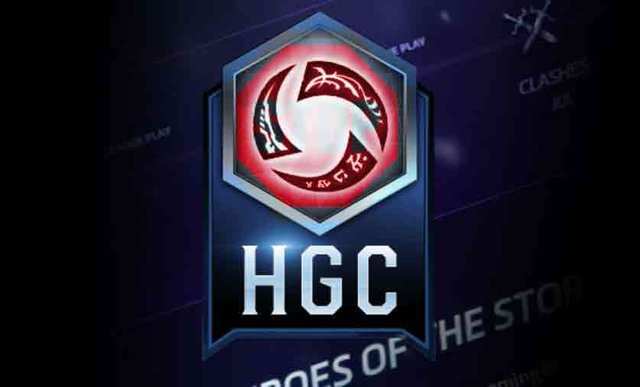Collapse of Heroes of the Storm's HGC is a Direct Result of Blizzard's Mismanagement

The Heroes of the Storm Global Championship (HGC) is not the first competitive scenes Blizzard has killed. It should be no surprise that the HGC's end has been officially announced.
Heroes of the Storm
If you are unfamiliar with Heroes of the Storm (HOTS), it is a multiplayer online battle arena (MOBA) game developed by Blizzard Entertainment and released in June 2015. The HGC is the professional tournament for the game that was created and supported directly by Blizzard.
On December 13th, Blizzard's president and chief development office released a joint statement as to the future of the game. In short, Blizzard decided to shift developers away from the development of HOTS and end the future of the HGC.
Poor Communication
More so than the end of HGC, the community's backlash is stemming from the announcement being very sudden. If you are unfamiliar with the HGC tournament system, the Crucible is the last qualifier tournament before the final professional tournament. Blizzard was so indecisive about the future of the HGC that they allowed the Crucible to be played at Blizzcon, meaning teams thought they were going to be playing in the final tournament.
The community response has been of anger, disappointment, and frustration. Korean caster Gclef's response mirrors many in the community.
Other stories being shared are ones such as that of @Liam_HotS, an aspiring HOTS player.
https://twitter.com/Liam_HotS/status/1073371376260603904
The First Mistake
Blizzard's decision making snuffing out the competitive scene has happened before. Starcraft: Brood War (SC1) was the first Blizzard game to attract a huge competitive scene, mainly in South Korea. The tournament was so large and popular, there were teams sponsored by major corporations such as Samsung and over $4m US Dollars in prize money have been awarded.
Blizzard saw the success of the SC1 competitive scene and went full helicopter parent with the release of Starcraft 2: Wings of Liberty (SC2).
The development decisions made in SC2 were a poor attempt at reproducing what made SC1 equally fun and competitive. SC1's popularity stemmed from the fact that it was at its core a simple game. However, the SC1 competitive scene showed that with ingenuity, the simple game equally had a very high skill ceiling. Blizzard tried to reproduce this high ceiling by adding gimmicks into SC2 which made the core gameplay level too high for the casual player.
Without a playerbase enjoying the game, you lose the viewership and thus sponsors for a competitive scene.
Equally, in an effort to control the potential profits of the SC2 tournament scene, Blizzard signed a broadcasting deal with GomTV, setting the precedence that broadcasts of the game were now under Blizzard control. This forced other organizations, such as KeSPA and OGN to eventually also fall under this Blizzard umbrella.
Viewership of SC2 saw a sharp decline in 2015 and at time of writing has 2,891 viewers on Twitch, lower than the number of viewers on another much older Blizzard game, Warcraft III: The Frozen Throne (3,676 viewers).
Helicopter HOTS
In an effort to reproduce the success of this competitive scene for HOTS, Blizzard took full control. Instead of just controlling the broadcasting rights and supporting the scene through periodical invitationals, Blizzard would exclusively self-run the competitions. In doing so, they also disallowed any third-party tournaments to be considered official, snuffing out any organic growth of the scene.
Regardless of the size of a game or its community, most of the most prevalent competitive tournaments have always stemmed from the players. From player interest, organizations and events, such as Dreamhack, would pick up the game for tournaments, even if small.
Games like Counterstrike (CS:GO) have healthy competitive tournament scenes with very little input from the parent developer companies. The predecessor, Counterstrike (1.6) had third party organizations such as the Cyberathlete Amature League (CAL) and the Cyberathlete Professional League (CPL). These organizations grew from their communities.
Comparatively, Blizzard tried to go full throttle with HOTS by dumping money into and propping up the competitive scene. Besides this, being the developer meant that their development decisions directly affected competitions. Working that closely with players skewed the developmental progress of the game. Major changes were developed and released just prior to major tournaments as stopgap measures or to potentially liven up gameplay.
All of this combined resulted in the inability for HGC to naturally attract viewership. At time of writing, HOTS has 4,147 Twitch viewers. Although HOTS always had relatively low viewership, the new lows are a direct result of many professional players ending their streams.
HOTS' competitive scene was a facade being propped up by the constant injection of cash by Blizzard. This big presentation was an effort to portray the game as healthier than it really was. Whether this decision to end the HGC and shelve HOTS development is due to slumping stock prices, mismanagement, or poor development, it was an inevitable outcome for a game that was failing to gain true mass appeal.
Posted from my blog with SteemPress : https://leonox.me/2018-12-22/posts/collapse-of-heroes-of-the-storms-hgc-is-a-direct-result-of-blizzards-mismanagement/
Your outstanding gaming content has caught our eyes and is rewarded with an upvote. Please visit our page @steemgg to learn more about Steemgg, the first html5 gaming platform built on the Steem Blockchain.
Vote for bobdos Witness